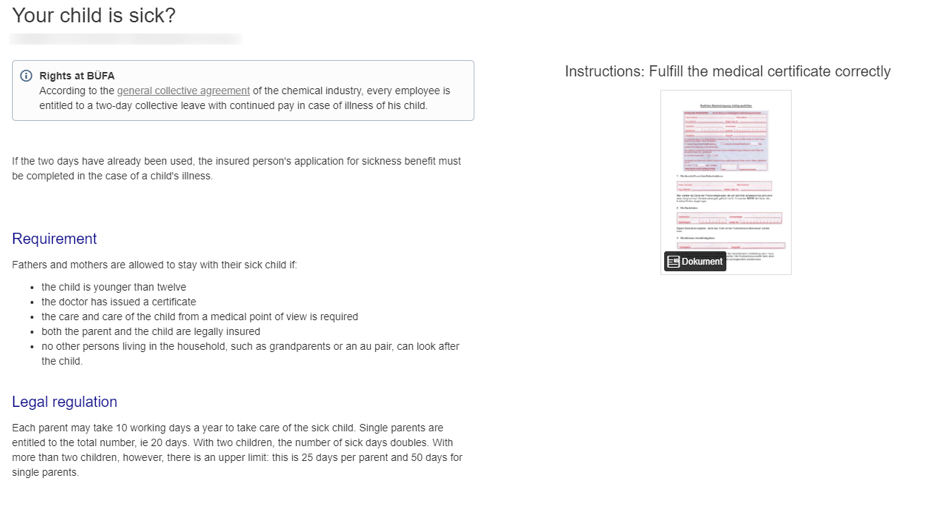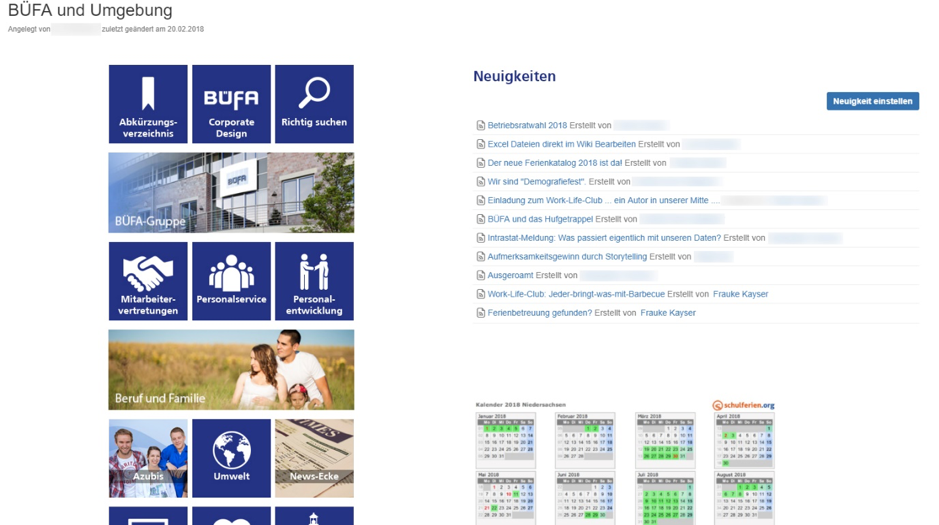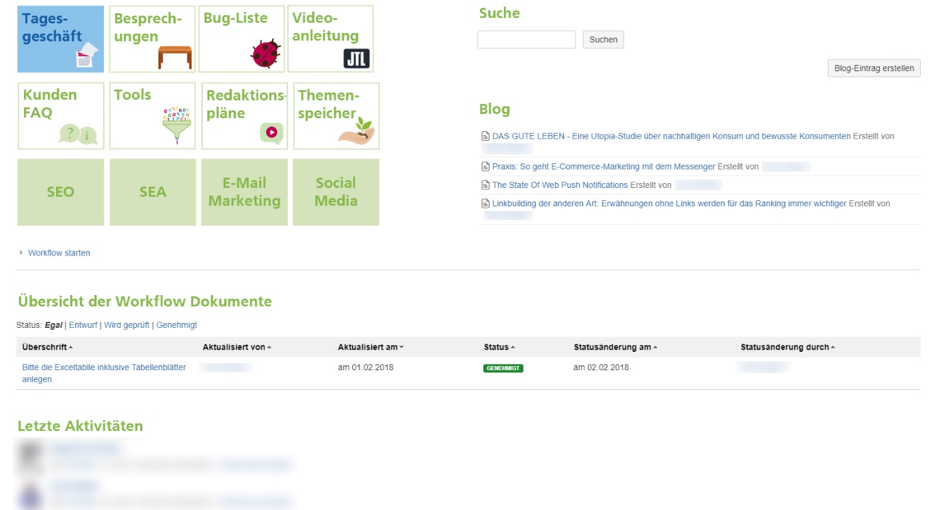Community resources
Community resources
Community resources
- Community
- Q&A
- Confluence
- Articles
- How to successfully onboard Confluence across your company
How to successfully onboard Confluence across your company
Nearly, three years ago I got the job to implement Atlassian’s Confluence at BÜFA-Group, a medium-sized German company in the chemical industry, active in chemical trading, cleaning technologies, and composite systems. BÜFA has over 500 people operating out of different countries like the Netherlands, Estonia, and Spain. Since we have distributed teams, my goal was to help teams from different locations and departments feel more connected and interested in what teammates were doing.
In this post, I’ll walk through the steps of how I on-boarded BÜFA onto Confluence and share some lessons throughout the process.
Phase 1: Listen
I wanted to start by building a highly visible space that would benefit the whole company so I could show the value of Confluence. I knew this software implementation would be much more than just an IT project – it would be a cultural change.
In order to make a change, you must understand the current state of company culture. So to start getting buy-in, I interviewed the administration departments like finance and controlling, HR, fleet management, and IT. I asked them what the most commonly asked questions in their daily work were. I wanted to understand the general problems and offer advice on how to solve them with different kinds of IT solutions. This consultant-like approach helped to get a stronger bond between IT and the “average user.”
An example of this is when we spoke with our health department and discussed the hundreds of questions they get asked, most of them being the same ones over and over again. This led me to write several comprehensive pages on all of their services. Pages on how to get eyeglasses for your computer, business bikes, physical therapy at work, sports groups, and cooking courses.
 This is an example of an HR topic we created:
This is an example of an HR topic we created:
Today, this information space is called “BÜFA and surroundings.” Each page is valuable with structured information, thematically cross-linked, and everyone has access.
The space homepage of “BÜFA and surroundings” in German
Phase 2: Get the party started with training
After our company had a prototype space with relevant information, my colleague Petra and I, put together a training program on how to use Confluence. We began by making a two-minute long video that showed an overview of Confluence and it’s most common use-cases. The video was included in the invitation e-mail for our training to introduce Confluence.
On training day we did a three-hour program where we trained in groups of 5-8 people. We mixed up the groups so there were different people with different jobs, and even from different subsidiary companies. We experimented a lot with group building. Even though colleagues were from different teams with different goals, they were able to learn from each other by telling stories of their “field trips.” It also showed Confluence can be used by any team.
In conclusion, I would say our software trainings were like real-life networking events, which really aligns with what Confluence can do!
For the trainers, here was our agenda for the training:
- Short explanation of what Confluence is
- Show current structure: BÜFA and surroundings, interesting spaces
- Hands-on training: Which covered
- In-line commenting, regular commenting, and liking
- Resolving in-line comments
- Create own page (empty page)
- Layout (three columns)
- Macros -> Infobox
- Table
- Image (file) + link (link from own page to next person – click through the “linked circle” and see the work of the others)
- New single-column area, sliding this one up
- Create tasks
- Back to dashboard: Edited pages are now listed here
- People Directory
- Profile – own page, own settings
- Page recommendations
- Confluence help (FAQ)
The main reason there is low acceptance of a new software is the fear of change in technology and processes.
– Lars Brozinski
We tried our best to get rid of this problem by making employees comfortable with how Confluence works, what they are able to do with it, and why they will benefit from using it. We also drove home the point no one can destroy anything – there is no failure. Freeing people up to play and experiment.
Phase 3: See the fire spreading
In our training, we discussed problems and possible solutions, gave examples and initiated an iterative development of the space. It can be very hard for a new user to start on a blank page and “do stuff” so it’s important to give them examples. We gathered information, consolidated, and structured it into helpful summaries (with graphics!) for users to refer to – kind of like writing journalistic articles.
Our only rule: we must build the space our colleagues want. They should be able to work with it. I designed hundreds of graphics for navigation elements, just to make them feel at “home” in their space.
Once we’re happy with the space, we opened it up to the whole team to use, sometimes with extra training just for the space. After we learned how to teach our users, we created three videos to train new colleagues: basics for readers, the editor, preferences, and additional stuff.
Organizing an e-commerce team
The human factor of introducing new software
Lars Brozinski and Petra Fischer
One of the biggest factors that helped us succeed was providing our daily support. Petra and I were friendly and helpful, allowing our users to come to us with every type of question (and they asked a lot of questions). Once you have good answers, document them in a Confluence space and share them with your users so they can learn by doing.
To grab the attention of those who aren’t using Confluence yet, you might need to do some traditional internal marketing. I published articles in our employee newspaper to inform everybody about the ongoing process and new interesting spaces. Some Confluence admins in other companies even have merchandise like mugs or postcards just for their own Confluence instance!
If you want to understand people’s minds and behavior I recommend the book “100 Things Every Designer Needs to Know About People” by Susan Weinschenk. It is filled with scientific references and very entertaining – every tech manager should read it.
To infinity and beyond
One year after our kick-off and training over 300 people face-to-face, we’ve achieved a very high usage of Confluence across the company from our research and events teams to our product team. Confluence has grown to be an important and strategic tool for us, like our ERP. Today we have 105 spaces and about 430 accounts. In a typical week, we have 6,000 read pages and 700-page edits.
The last big project was to build our document management system based on Confluence. It took a long time, but I think we developed a really good solution. We’ll save that for another blog post.
Head over to the Atlassian blog to view Lar's post and discover many more like it!
Was this helpful?
Thanks!
Lars Swart




1 comment